How Pamukkale is the warm water place of the world
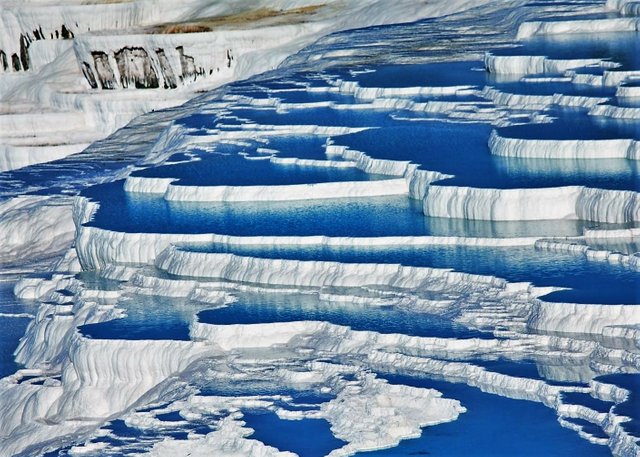
Hi, Friends!
I am again here with a new post which will great because this post is about a unique topic Pamukkale which is a beautiful place in the Turkey and very popular according to tourists like.Pamukkale meaning cotton castle in Turkish is a natural site in Denali in southwestern of Turkey. The area is famous for a carbonate mineral left by the flowing water.It is located in Turkey Inner Aegean region in the River Mender's valley which has a temperate climate for most of the year.Traver tine terrace formations at Pamukkale Turkey. May 21.2011The ancient Roman city of Hierapolis was built on top of the white castle which is in total about long 600 m wide and 160 m high. It can be seen from the hills on the opposite side of the valley in the town of Denizen 20 km away.
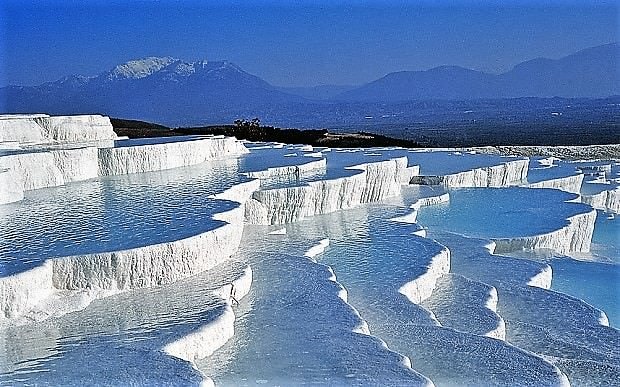
Known as Pamukkale ancient Hierapolis Holy City this area has been drawing the weary to its thermal springs since the time antiquity. The Turkish name refers to the surface of the shimmering snow white limestone shaped over millennia by calcium rich springs. Dripping slowly down the vast mountainside mineral rich waters foam and collect in terraces spilling over cascades of stalactites into milky pools below. Legend has it that the formations are solidified cotton that giants left out to dry
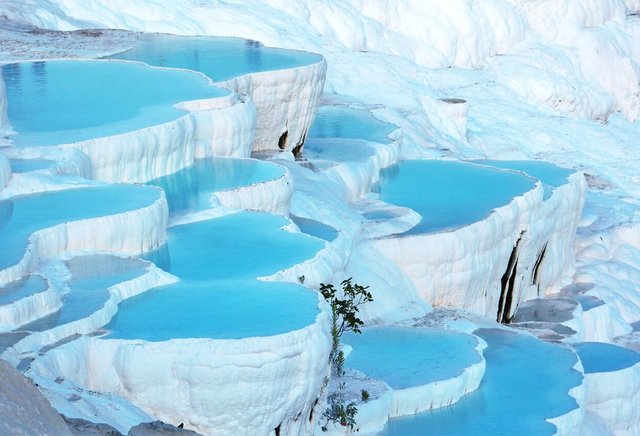
Tourism is and has been a major industry in the area for thousands of years due to the attraction of the thermal pools. As recently as the mid 20th century various hotels were built over the ruins of Hierapolis causing considerable damage An approach road was built from the valley over the terraces and motor bikes were allowed to go up and down the slopes. When the area was declared a World Heritage Site the hotels were demolished and the road removed and replaced with artificial pools.
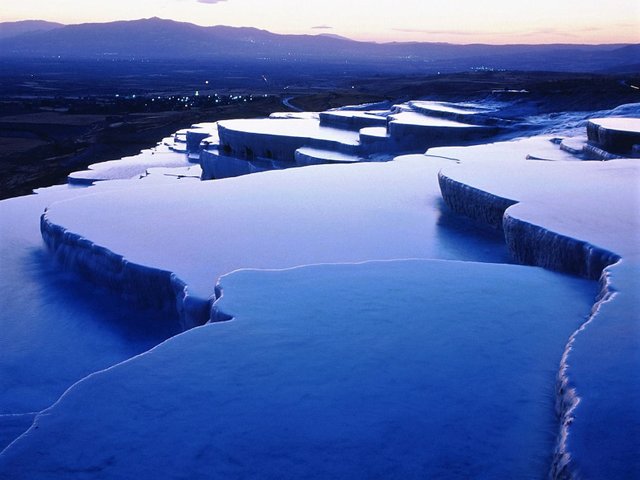
Overshadowed by natural wonder Pamukkale well preserved Roman ruins and museum have been remarkably underestimated and unadvertised tourist brochures over the past twenty years have mainly featured photos of people bathing in the calcium pools. Aside from a small footpath running up the mountain face the terraces are all currently off-limits having suffered erosion and water pollution at the feet of tourists.
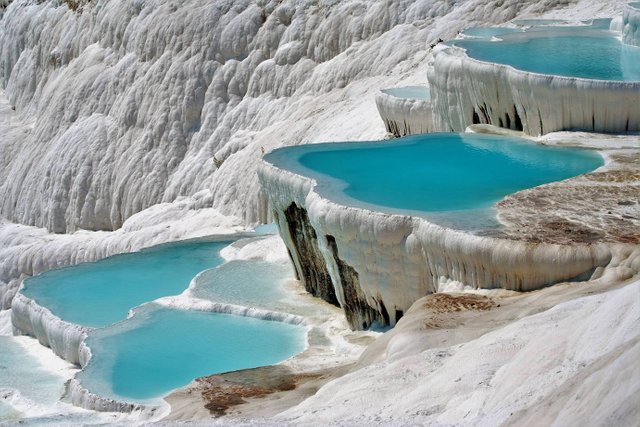
Pamukkale terraces are made of travertine a sedimentary rock deposited by water from the hot springs.In this area there are 17 hot water springs in which the temperature ranges from 35 °C to 100 °C . The water that emerges from the spring is transported 320 metres to the head of the travertine terraces and deposits calcium carbonate on a section 60 to 70 metres long covering an expanse of 24 meter to 30 meter . When the water, supersaturated with calcium carbonate reaches the surface carbon dioxide de-gasses from it and calcium carbonate is deposited. Calcium carbonate is deposited by the water as a soft gel which eventually crystallizes into travertine.

Pamukkale is a tourist attraction place. It is recognized as a World Heritage Site together with Hierapolis. Hierapolis Pamukkale was made a World Heritage place in 1988.The underground volcanic activity which causes the hot springs also forced carbon dioxide into a cave which was called the Plutonium which here means (place of the god Pluto). This cave was used for religious purposes by priests of Cybele who found ways to appear immune to the suffocating gas.Tadpoles can be found in the pools.The hotels built in the 1960 were demolished as they were draining the thermal waters into their swimming pools and caused damage to the terraces. Nowadays water supply to the hotels are limited and they need to deposit the water used to the supply to generate.Access to the terraces is not allowed and visitors are asked to follow the pathway. Due to the new regulations visitors are only allowed to dip their feet into the small pools with their footwear removed.
Regards: @ajmalaftab
schön